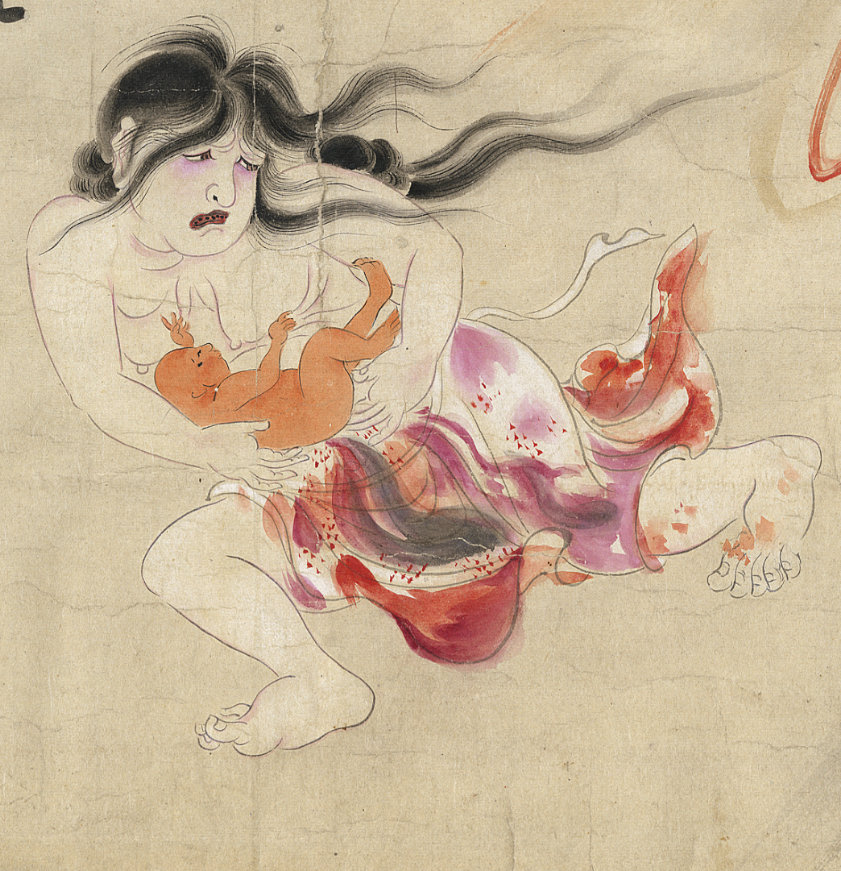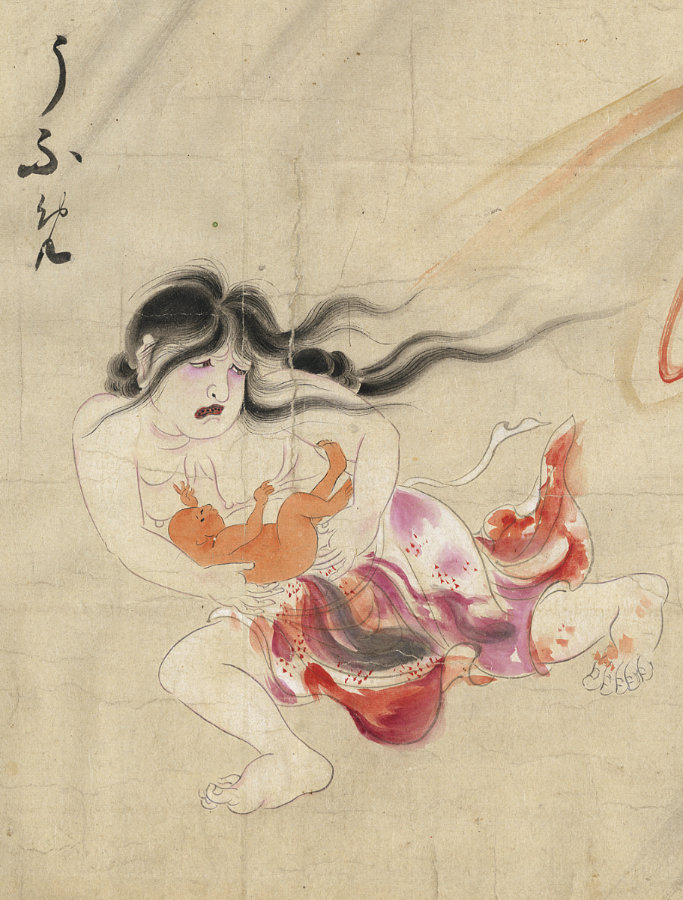Ubume are Japanese yōkai of pregnant women. Throughout folk stories and literature the identity and appearance of ubume varies. However, she is most commonly depicted as the spirit of a woman who has died during childbirth. Passersby will see her as a normal-looking woman carrying a baby. She will typically try to give the passerby her child then disappear. When the person goes to look at the child in their arms, they discover it is only a bundle of leaves or large rock. The idea that pregnant women who die and get buried become “ubume” has existed since ancient times; which is why it has been said that when a pregnant woman dies prepartum, one ought to cut the fetus out the abdomen and put it on the mother in a hug as they are buried. In some regions, if the fetus cannot be cut out, a doll would be put beside her.
| Alias Ubume (うぶめ) |
| Real Names/Alt Names ○ |
| Characteristics Yōkai, Scientific Revolution, Japanese |
| Creators/Key Contributors ○ |
| First Appearance Japanese folklore |
| First Publisher ○ |
| Appearance List Bakemono no e (化物之繪, “Illustrations of Supernatural Creatures”, Edo Period), Gazu Hyakki Yagyō (画図百鬼夜行, “The Illustrated Night Parade of a Hundred Demons” or The Illustrated Demon Horde’s Night Parade, 1776) Vol. 2 “Yang” |
| Sample Read Bakemono no e (Edo Period) [Internet Archive] |
| Description Ubume are Japanese yōkai of pregnant women. Throughout folk stories and literature the identity and appearance of ubume varies. However, she is most commonly depicted as the spirit of a woman who has died during childbirth. Passersby will see her as a normal-looking woman carrying a baby. She will typically try to give the passerby her child then disappear. When the person goes to look at the child in their arms, they discover it is only a bundle of leaves or large rock. The idea that pregnant women who die and get buried become “ubume” has existed since ancient times; which is why it has been said that when a pregnant woman dies prepartum, one ought to cut the fetus out the abdomen and put it on the mother in a hug as they are buried. In some regions, if the fetus cannot be cut out, a doll would be put beside her. |
| Source Ubume – Wikipedia |


